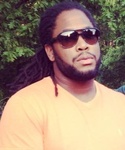When Vira Cage first heard the verdict at the trial of her nephew Charles L. Wilhite, she couldn’t believe her ears.
“The fact that the jury came back with, ‘Guilty,’ shook us to the core,” she said of the events of Dec. 6, 2010.
That day, Wilhite was convicted of first-degree murder in the 2008 killing of Alberto Rodriguez in Springfield, Mass.
Forty months later, a Hampden County Superior Court judge overturned the conviction. A key witness in the prosecution had testified to lying when he identified Wilhite as the shooter. Another eyewitness followed suit, and the prosecution’s case fell apart.
Wilhite’s case is one among hundreds of wrongful convictions in the country that stem from false eyewitness testimony, both mistaken and intentional.
In 2009, the Boston Bar Association conducted a study on the causes of wrongful conviction. At the time, it found that out of 242 men exonerated through subsequent DNA testing in the United States, 75 percent had been “convicted, based, in part, on faulty eyewitness identifications.”
Kathy Weinman, then president of the association, wrote in the report’s foreword: “Sometimes our system of justice gets it completely wrong.”
She added, “The Commonwealth of Massachusetts is not immune.”
According to the National Registry of Exonerations, 35 out of the 36 people exonerated in Massachusetts since 1990 were convicted based on mistaken witness identification, perjury or false accusations, or a combination of both.
Some exonerees served two years: Johnny Vargas-Cintron, who was convicted of drug trafficking in 2011, was cleared of charges this summer.
Others, such as Mark Schand, spent twenty-three years behind bars before being released. Schand was convicted of murder, robbery and assault in Springfield in 1986. The prosecution dropped the charges in October 2013, after three of its six eyewitnesses recanted and new evidence surfaced regarding the initial descriptions of the actual shooter.
In Wilhite’s case, prosecution witness Nathan Perez had initially said that he had seen Wilhite at the Pine Street market in Springfield on the night of the shooting. Then, at a hearing in 2012 – a year and a half into Wilhite’s life sentence – Perez claimed that Springfield police detective Anthony Pioggia had threatened to make him an accessory to murder if he did not name Wilhite as the shooter.
Pioggia has since denied the accusation in court.
Perez’s statement turned the tide for Wilhite. On Jan. 17, 2013, Wilhite was released from the maximum-security Souza-Baranowski Correctional Center in Shirley, Mass., where he had spent 37 of his 40 months in prison.
Brandon Garrett, a professor at the University of Virginia School of Law, said that one problem with witness testimony is that it relies on memory, which is both fallible and malleable.
In his jurisprudence column for Slate.com, Garrett wrote that anything police officers say during identification could influence what a witness remembers.
“Even well-intended, encouraging remarks, like ‘good job, you picked the guy,’ can have a dramatic effect on eyewitness memory, as psychologists have shown,” he said.
Sound police procedure is therefore vital when obtaining witness testimonies, Garrett said.
Andrew Pappone, a staff attorney for The New England Innocence Project, noted that Massachusetts lacks a unified policy for interviewing witnesses.
The process varies from town to town, leaving space not just for mistakes on the part of eyewitnesses, he said. The lack of a policy also allows local authorities to use suggestive practices.
“Police don’t want to misidentify someone, but we believe they have a lot of pressure on them (to arrest a suspect),” Pappone said. The pressure to close an investigation could lead officers to encourage eyewitnesses to identify a particular suspect, he said.
In July, a study group commissioned by the Massachusetts Supreme Judicial Court submitted a report on the state’s current policies on eyewitness identification, along with ways to improve them.
The group, made up of justices, lawyers and the chief of the Norwood Police Department, recommended that law enforcement agencies adopt a uniform policy statewide “to ensure that all Massachusetts police departments employ best practices on eyewitness identification procedures.”
It recommended that trial judges play a bigger role in pretrial hearings on whether eyewitness identification could be admitted in court. Juries should also be given clearer, more extensive instruction before trial, it said.
“In our opinion, the… recommendations set out in this report… will, if adopted, result in fewer wrongful convictions, as well as an increase in appropriate convictions, in cases that turn on eyewitness identification,” the study group wrote.
The SJC has since released the report and a subsequent notice inviting comment on the Massachusetts state website.
Despite its unreliable nature, witness testimony is still considered compelling evidence. According to a 2011 article in the Boston College Law Review, nearly 80,000 people are named as suspects by eyewitnesses every year.
The same article quoted the U.S. Supreme Court as having said, “There is almost nothing more convincing than a live human being who takes the stand, points a finger at the defendant and says, ‘That’s the one.’”
The consequences for those accused and convicted extend beyond time served.
Wilhite, for instance, has been unable to regain stability almost a year into his release.
“I haven’t done any of the things I used to do,” he said. “It’s not the same.”
He said he tried to return to his old job as a personal care assistant to his maternal grandmother, but found he couldn’t stay in a confined space for long periods without feeling like he’s back in a cell.
Wilhite said he has no interest in spending time with old friends. For the most part, he leaves his house only to visit his two daughters.
Leslie Scott, a New York federal public defender, said that the experience of prison is hard enough for someone who is guilty. For an innocent man, it could be “very, very traumatizing,” she said.
In her 2010 article for the American University Criminal Law Brief, Scott wrote that after imprisonment, the wrongly convicted tend to suffer feelings of shock, disbelief, helplessness, rage and a loss of purpose in life.
She pointed out that unlike other ex-prisoners, exonerees do not have the benefit of a parole officer, whose job is to help them find employment, counseling services and other resources they need to reintegrate into society.
“I think it says the system is really backwards and needs to be reformed,” she said in an interview.
Meanwhile, Wilhite said he is taking life a day at a time: spending time with his kids, looking for work. He hopes, in time, to recover a sense of normalcy.
“I’m trying to get back to the routine,” he said. “Hopefully I get back on the straight track.”






